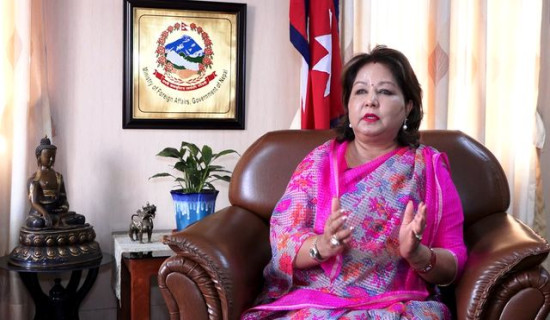- Saturday, 10 May 2025
Xizang’s Education Boosts Regional Advancements
Over the past few decades, China has steadily achieved widespread and balanced educational development through continuous reform and investment—particularly in remote and ethnic minority regions. Among these, the Xizang Autonomous Region stands out with remarkable progress in education.
In the 66 years since 1959, Xizang has not only undergone fundamental transformations in its social system but has also made historic breakthroughs in economic development, cultural preservation, and educational equity. Education, as the driving force behind Xizang’s social advancement, has created a miracle in the history of global education—evolving from a pre-reform illiteracy rate of over 95 per cent to today’s comprehensive 15-year free education coverage.
The Chinese government has made educational equity a core strategy in Xizang’s development. Xizang was the first region in China to establish a 15-year publicly funded education system from preschool through high school. Since 2012, the government has raised the funding standards 11 times for students from farming and herding families and those from economically disadvantaged urban households—covering meals, boarding, and basic learning expenses. The current annual per-student subsidy stands at 5,620 yuan, including 1,000 yuan from the nutritional improvement programme. Xizang now has 3,618 schools, 96,600 teachers and staff, and 970,000 students across all levels of education. Key education indicators have met or surpassed the national average.
Moreover, the right to education for women in Xizang has been fully guaranteed, with women now accounting for more than 50 per cent of higher education enrolment. This reflects the broader gender equality women enjoy in Xizang’s economic, political, and social life. This transformation has broken the monopoly on knowledge and turned education into a vital tool for the Xizang’s people to change their lives.
The miracle of education in Xizang can be summarised by three key experiences:
Firstly, the central government implemented a national strategy that prioritises education. Central fiscal investment in Xizang’s education has seen an average annual growth rate of 17.96 per cent over the past decade. The entire nation supports Xizang’s development through a coordinated effort: outstanding teachers from across China are rotated into Xizang to improve teaching quality. Even schools in remote areas receive instructors from more developed regions each year. Local legislation has also provided institutional support.
Secondly, boarding services at schools have effectively addressed the difficulty faced by students from remote farming and herding areas in attending school. In regions with extreme altitudes, harsh natural conditions, and highly dispersed populations, some schools provide boarding options—based on educational law and in line with practices elsewhere in China. Boarding is voluntary, with students returning home on weekends and holidays. Parents are involved in the management and planning of boarding life, ensuring students from all ethnic backgrounds can equally access quality education.
Thirdly, digital empowerment has bridged geographic barriers through technology. China has extended 5G coverage even into remote pastoral areas, enabling students to attend virtual classes alongside peers in major cities like Beijing and Shanghai. This digital transformation has optimised the distribution of educational resources.
In summary, the revitalisation of education has injected sustained momentum into Xizang’s development. The number of high-calibre professionals has rapidly increased, and local talents are now playing leading roles in clean energy, agricultural technology, cultural tourism, ecological protection, and other key sectors. Around 36,000 farmers and herders have acquired vocational skills, increasing household incomes by an average of 24,000 yuan annually. Youth crime rates have dropped to just 0.12 per cent.
Looking ahead, there is hope that China and Nepal will enhance their educational exchanges and cooperation to foster coordinated development throughout the Himalayan region.
(The author is a professor at the School of Public Administration, University of Electronic Science and Technology of China, and Deputy Director of the Pan-Himalaya Information and Communication Research Centre.)

















